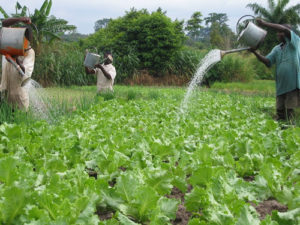Rising farm labour cost blamed on increasing migration of youth
 Unavailability of labour has been cited as among the leading challenges that affect farming activities in rural settings as it contributes to growing labour cost and an upsurge in the prices of agricultural produce.
Unavailability of labour has been cited as among the leading challenges that affect farming activities in rural settings as it contributes to growing labour cost and an upsurge in the prices of agricultural produce.
Rural-Urban migration is a factor of labour shortages in farming communities that see most rural Ghanaian youth migrating in search of better opportunities and fulfilment of their personal or career and academic goals.
Mr Edmund Quaynor, Secretary for Seed Producers Association of Ghana in the Eastern Region told the Ghana News Agency that the situation had led to an increase in the market prices of goods and services.
Last year, he said a manpower cost for weeding an acre of land was GH¢180, but this has jumped to GH¢360 by the third quarter of this year.
He said the deplorable state of feeder roads in farming areas was equally challenging to local farmers as it swelled transportation costs which also affected the high cost of fertilizer and prices of foodstuff.
He said fertilizer prices increased by almost 100 per cent in the open market, adding, “Even that rural farmers cannot get access to it due to lack of transport.
“For instance, rural farmers in Nkyenua community in the Eastern Region need to take about three cars to buy fertilizer at the district capital,” he said.
Mr Quaynor said appealed to the government to rehabilitate the feeder roads to enhance farming activities and help reduce the rising cost of farm inputs and produce.
A market survey conducted in Koforidua Central Market by the Ghana News Agency on cereals such as Soya beans showed fluctuation of prices of produce.
Soya bean is a legume of the pea family which is high in protein, and a source of feed for the poultry industry and human consumption.
A legume seller, Madam Joyce Adu, said formerly, the Soya beans were supplied to sellers in large quantities from Techiman in the Bono East Region but that has stopped due to rising transport costs.
“Due to the poor nature of roads, the transport fare are high compelling me to increase the price on sale,” she said.
One cup of Soya beans as of September 2021, was GH¢2.00, according to marketers, but by November it was being sold at GH¢3.00 and GH¢3.50.
Madam Hawa Abu, groundnut and soya beans seller, said the increment in prices of goods had resulted in low patronage and appealed for a reduction in fuel prices as it remained a major determinant in transport cost.
He said the reduction could help stabilize local prices of goods and services bolster market demand and increase the income of sellers as well as satisfy buyers.
However, in presenting the 2022 budget statement and economic policy to parliament, Mr Ken Ofori-Atta, Finance Minister said the Ministry of Food and Agriculture would continue to provide improved seeds and fertilizer at subsidized prices to increase production volumes of maize, rice, soya beans, sorghum, cowpea and groundnut.
On feeder roads, he said, routine maintenance had been carried out on 6,265 kilometres of the feeder road network.
Source: GNA
